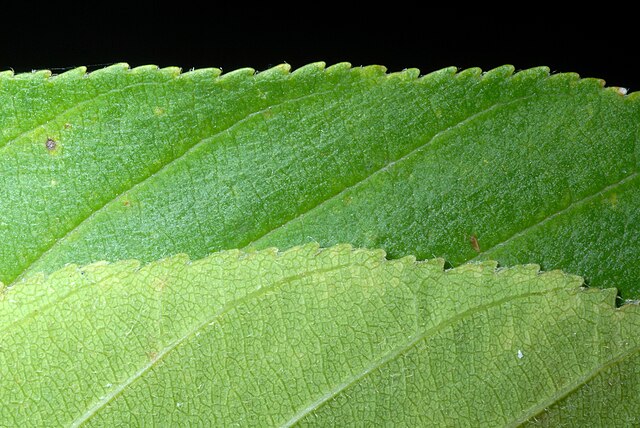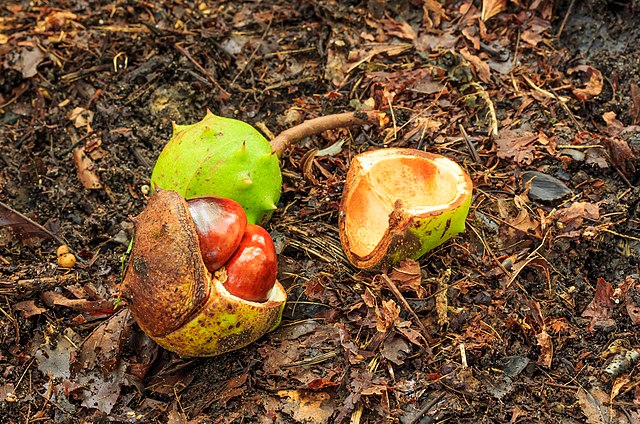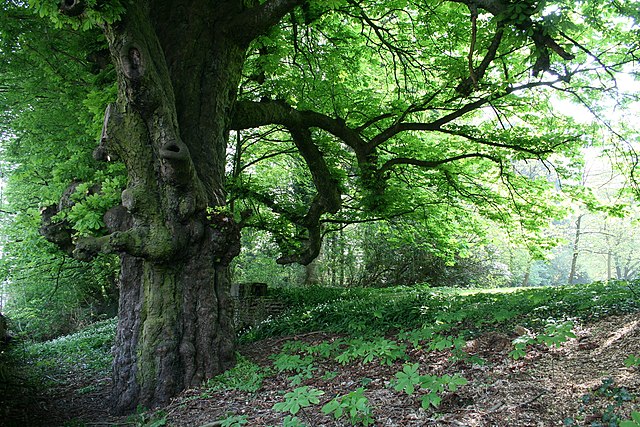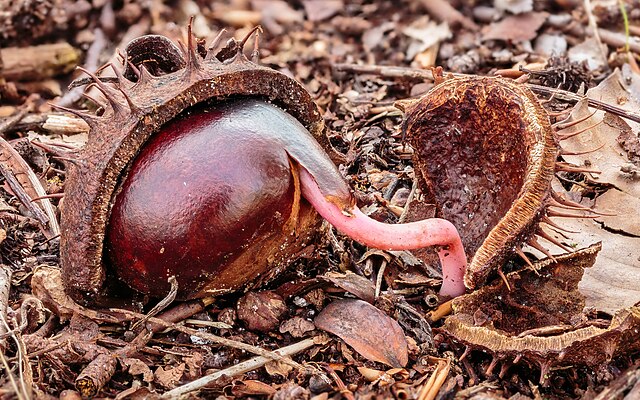Have you ever wondered about those distinctive trees that produce glossy, chestnut-brown nuts that look like they’re wearing tiny caps? You’re looking at one of nature’s most fascinating specimens – the buckeye tree. These remarkable trees have captured hearts and minds for centuries, becoming deeply woven into American culture and folklore.
Whether you’re a gardening enthusiast, a nature lover, or simply curious about the tree that gave Ohio its nickname, you’re in for a treat. Let’s dive deep into the world of buckeye trees and discover why they deserve a special place in your heart and perhaps even your backyard.
What Exactly is a Buckeye Tree?
Think of buckeye trees as the unsung heroes of the deciduous forest. These magnificent trees belong to the genus Aesculus, which includes about 13-19 species depending on who’s counting. They’re part of the soapberry family (Sapindaceae), and they’re not your average backyard tree.
Picture a tree that’s like a natural Swiss Army knife – it offers stunning spring flowers, provides excellent shade in summer, puts on a spectacular fall show, and produces those iconic nuts that have fascinated people for generations. That’s your buckeye tree in a nutshell (pun intended).
What makes buckeye trees truly special is their unique combination of beauty and character. They’re medium to large-sized trees that can live for decades, sometimes even centuries, becoming living landmarks in their communities.
The Rich History Behind the Buckeye Name
Ever wondered why they call it a “buckeye”? The story is actually quite charming. Early settlers noticed that the dark brown nut with its light-colored scar looked remarkably like the eye of a white-tailed deer – a buck’s eye. It’s one of those perfect examples of how common names in nature often tell a story.
The resemblance is so striking that once you see it, you can’t unsee it. The glossy brown surface represents the deer’s eye, while the lighter hilum (the scar where the nut was attached to the pod) looks just like the iris. It’s nature’s way of being both practical and poetic.
Different Types of Buckeye Trees

Not all buckeye trees are created equal. Just like people, they come in different shapes, sizes, and personalities. Let’s meet the main players in the buckeye family tree.
Ohio Buckeye: The State Tree
The Ohio buckeye (Aesculus glabra) is the celebrity of the bunch. This is the tree that put Ohio on the map as the “Buckeye State.” Growing up to 40 feet tall, these trees are like the reliable friend everyone loves – dependable, attractive, and always there when you need them.
Ohio buckeyes are known for their distinctive five-leaflet compound leaves and their clusters of yellowish-green flowers that bloom in spring. They’re hardy trees that can handle a variety of conditions, which explains why they’ve become such an integral part of Ohio’s landscape and identity.
Red Buckeye: The Southern Beauty
If the Ohio buckeye is the dependable friend, then the red buckeye (Aesculus pavia) is the stunning southern belle. These smaller trees, typically reaching 15-20 feet, are all about making a statement with their brilliant red flower clusters.
Native to the southeastern United States, red buckeyes are perfect for smaller gardens where you want maximum impact in minimum space. They’re early bloomers, often flowering before their leaves fully emerge, creating a spectacular display that hummingbirds absolutely adore.
Yellow Buckeye: The Mountain Giant
The yellow buckeye (Aesculus flava) is the gentle giant of the family. These impressive trees can reach heights of 60-75 feet, making them perfect for large landscapes where you want to make a serious statement.
Also known as sweet buckeye, these trees produce beautiful yellow flower clusters and are native to the Appalachian Mountains. They’re like the wise elder of the buckeye family – tall, dignified, and commanding respect wherever they grow.
California Buckeye: The Golden State’s Pride
California buckeye (Aesculus californica) marches to its own drummer. Unlike its eastern cousins, this tree has adapted to California’s unique climate by going dormant during the hot, dry summer months. It’s like nature’s way of saying, “When the going gets tough, the tough take a nap.”
These trees bloom in late spring with fragrant white to pale pink flowers, then drop their leaves early to conserve water. It’s a brilliant survival strategy that makes them perfect for drought-prone areas.
Bottlebrush Buckeye: The Ornamental Star
The bottlebrush buckeye (Aesculus parviflora) is the showoff of the family. This shrub-like buckeye produces spectacular white flower spikes that can reach 8-12 inches long, resembling giant bottlebrushes.
Growing only 8-12 feet tall, it’s perfect for smaller gardens where you want buckeye beauty without the massive size. It’s like having a buckeye tree that’s been perfectly sized for modern living.
Where Do Buckeye Trees Grow?
Buckeye trees are primarily North American natives, with most species calling the eastern United States home. They’re like the ultimate homebodies – they’ve found their perfect spot and decided to make themselves comfortable.
Natural Habitat and Distribution
In the wild, you’ll find buckeye trees in rich, moist woodlands and along stream banks. They’re social trees that often grow in mixed forests alongside maples, oaks, and hickories. Think of them as the friendly neighbors of the forest world.
The greatest diversity of buckeye species can be found in the southeastern United States, particularly in the Appalachian Mountains. However, their range extends from southern Canada down to northern Florida and from the Atlantic coast to the Great Plains.
Climate Requirements
Buckeye trees are surprisingly adaptable when it comes to climate. Most species prefer temperate climates with adequate rainfall, but they can handle a range of conditions. They’re like the diplomatic members of the tree world – they get along with almost everyone.
Most buckeyes are hardy in USDA zones 3-7, though this varies by species. They prefer areas with distinct seasons, as the winter chill helps them flower properly in spring. It’s nature’s way of ensuring they get their beauty sleep.
How to Identify a Buckeye Tree

Identifying a buckeye tree is like learning to recognize a good friend – once you know what to look for, you’ll spot them everywhere. Let’s break down the key identifying features.
Distinctive Leaf Patterns
The most distinctive feature of buckeye trees is their palmately compound leaves. Imagine a hand with five fingers – that’s essentially what a buckeye leaf looks like. Each leaf consists of 5-7 leaflets arranged like the fingers of your hand.
These leaflets are oval-shaped with serrated edges, and they’re attached to a central point at the end of the leaf stem. It’s like nature’s way of creating a perfect hand print. The arrangement is so distinctive that once you learn it, you’ll never confuse a buckeye with another tree.
Recognizing Buckeye Flowers
Buckeye flowers are the tree’s way of putting on a spring fashion show. They appear in upright clusters called panicles, which can be 4-10 inches long depending on the species. Each individual flower is small but together they create impressive displays.
The flowers are typically four-petaled and asymmetrical, with prominent stamens that extend beyond the petals. Colors range from yellow-green to bright red to pure white, depending on the species. They’re like nature’s own fireworks display, bursting with color and energy.
The Famous Buckeye Nut
Ah, the buckeye nut – the tree’s signature calling card. These nuts are enclosed in a thick, leathery husk that’s often spiny on the outside. When the husk splits open in fall, it reveals one to three glossy, dark brown nuts with that distinctive light-colored scar.
The nuts are about 1-2 inches in diameter and perfectly smooth, almost like they’ve been polished. They’re so attractive that people often collect them as good luck charms or natural decorations. Just remember – they’re toxic to humans and most animals, so they’re for looking, not eating.
Growing Your Own Buckeye Tree
Ready to add a buckeye tree to your landscape? Great choice! These trees are like the perfect house guests – beautiful, well-behaved, and not too demanding. Let’s explore how to give them the best start in life.
Planting Requirements
Buckeye trees prefer a location with partial shade to full sun, though they can tolerate full shade better than many other trees. They’re like people who enjoy both sunny beaches and cozy reading nooks – adaptable and easy to please.
When selecting a planting site, consider the mature size of your chosen species. A yellow buckeye needs significantly more space than a red buckeye. Think of it like choosing between a Great Dane and a Beagle – both are wonderful, but they have different space requirements.
Plant your buckeye tree in spring or fall when temperatures are moderate. Dig a hole twice as wide as the root ball but no deeper – you want the tree to sit at the same level it was growing in the nursery.
Soil and Water Needs
Buckeye trees are like Goldilocks when it comes to soil – they don’t want it too wet or too dry, but just right. They prefer well-draining soil that retains some moisture. Rich, loamy soil is ideal, but they can adapt to various soil types.
The pH should be slightly acidic to neutral (6.0-7.0). If your soil is too alkaline, you might need to amend it with sulfur or organic matter. Think of it as creating the perfect recipe for tree success.
Water your newly planted buckeye regularly during its first growing season, but avoid overwatering. Once established, most buckeyes are fairly drought-tolerant, though they’ll appreciate supplemental watering during dry spells.
Maintenance and Care Tips
Buckeye trees are refreshingly low-maintenance once established. They’re like the ideal pet – they don’t require constant attention but will reward you with years of beauty and companionship.
Pruning should be minimal and done in late winter or early spring. Remove dead, damaged, or crossing branches, but avoid heavy pruning as buckeyes don’t respond well to it. Think of it as giving them a gentle haircut rather than a major makeover.
Fertilizing is usually unnecessary in good soil. If your tree seems to be struggling, a balanced, slow-release fertilizer in early spring can help. But remember, these trees have been thriving on their own for centuries – they probably don’t need as much help as we think.
Common Problems and Solutions
Like all trees, buckeyes can face some challenges. Leaf scorch is common in hot, dry conditions, but it’s usually not serious. The leaves might look a bit crispy around the edges, but the tree will recover.
Scale insects and leaf miners can occasionally be problematic, but these issues are rarely serious enough to threaten the tree’s health. If you notice problems, consult with a local arborist who can recommend appropriate treatments.
The Cultural Significance of Buckeye Trees
Buckeye trees aren’t just trees – they’re cultural icons. They’ve woven themselves into the fabric of American society in ways that few other trees can match.
Ohio State and the Buckeye Connection
The connection between Ohio and buckeye trees runs deeper than just being the state tree. Ohioans are proud to be called “Buckeyes,” and the tree has become a symbol of the state’s identity. It’s like having a natural mascot that represents the character of an entire state.
The Ohio State University has embraced this connection wholeheartedly. Their athletic teams are called the Buckeyes, and their mascot is Brutus Buckeye. Students and alumni often carry buckeye nuts for good luck, especially during football season. It’s amazing how a tree can become so central to a university’s identity.
Uses and Benefits of Buckeye Trees
Buckeye trees are like the Swiss Army knives of the tree world – they’re useful in more ways than you might expect.
Ecological Importance
In their native habitats, buckeye trees play crucial ecological roles. They’re early bloomers, providing nectar for bees and other pollinators when few other food sources are available. It’s like they’re hosting the season’s first dinner party for the insect world.
Their large leaves create excellent shade and help prevent soil erosion. When the leaves fall, they decompose quickly, adding organic matter to the soil. They’re like nature’s own composting system, continuously improving the soil around them.
Medicinal and Traditional Uses
Historically, various parts of buckeye trees have been used in traditional medicine, though it’s important to note that buckeye nuts and bark contain compounds that can be toxic. Native American tribes used buckeye preparations for various ailments, but modern medicine doesn’t recommend these uses due to safety concerns.
The wood, while not commercially valuable, is sometimes used for furniture making and carving. It’s light-colored and easy to work with, making it popular among woodworkers for certain projects.
Wildlife and Buckeye Trees

Buckeye trees might as well have a “Wildlife Welcome” sign hanging from their branches. They’re like the neighborhood gathering spot for various animals.
Animals That Depend on Buckeyes
While the nuts are toxic to most mammals, squirrels have developed a technique to process them safely. They bury the nuts and let winter leaching remove the toxic compounds. It’s like nature’s own detoxification process.
Deer often browse on buckeye foliage, though they usually prefer other plants. The flowers are magnets for bees, butterflies, and hummingbirds. Ruby-throated hummingbirds particularly love red buckeye flowers, timing their spring migration to coincide with the blooming period.
Many birds use buckeye trees for nesting sites, appreciating the sturdy branches and good canopy coverage. It’s like having a natural apartment building for the bird community.
Seasonal Changes in Buckeye Trees
Buckeye trees are like nature’s calendar – they clearly mark the passage of seasons with their changing appearance.
Spring Awakening
Spring is when buckeye trees truly shine. They’re among the first trees to leaf out, often before the last frost. Their flower clusters appear like nature’s own fireworks display, announcing that winter is officially over.
The timing varies by species, but most buckeyes bloom in April or May. It’s like they can’t wait to show off their new spring wardrobe.
Summer Growth
Summer finds buckeye trees in full leaf, providing excellent shade and a lush green canopy. The nuts are developing inside their spiny husks, slowly growing to maturity. It’s the tree’s productive season, when all the energy goes into growth and nut development.
Fall Transformation
Fall is when buckeye trees prepare for their grand finale. The leaves turn brilliant shades of yellow, orange, and red, creating a spectacular display. The nuts ripen and fall, creating opportunities for wildlife and new trees.
Many buckeye species are among the first trees to change color and drop their leaves, earning them the nickname “early-bed trees.” It’s like they’re getting a head start on their winter rest.
Winter Dormancy
Winter buckeye trees have their own stark beauty. The bare branches reveal the tree’s architecture, and the large, sticky buds hint at the spring explosion to come. It’s nature’s way of showing that even in dormancy, there’s preparation and promise.
Fun Facts About Buckeye Trees
Here are some fascinating tidbits about buckeye trees that might surprise you:
The sticky buds of buckeye trees contain a natural resin that was once used as a glue by Native Americans. Talk about a multipurpose tree!
Buckeye wood is so light that it was once used to make artificial limbs. The wood is about as dense as cork, making it perfect for applications where weight matters.
Some buckeye trees can live for over 200 years, making them witness to generations of human history. Imagine the stories they could tell!
The flowers of red buckeye trees are specially adapted for hummingbird pollination. The red color and tubular shape are like nature’s own hummingbird feeder.
Buckeye nuts will sprout if planted immediately after falling, but they lose viability quickly if they dry out. It’s nature’s way of ensuring quick germination.
Conclusion
Buckeye trees are truly remarkable specimens that deserve much more recognition than they typically receive. From their distinctive hand-shaped leaves to their stunning spring flowers and iconic nuts, these trees offer beauty, ecological benefits, and cultural significance that’s hard to match.
Whether you’re considering adding a buckeye tree to your landscape, trying to identify one in the wild, or simply appreciating their role in American culture, these trees have something special to offer. They’re living proof that sometimes the most wonderful things in nature are hiding in plain sight, waiting for us to notice and appreciate their unique gifts.
So the next time you see a buckeye tree, take a moment to appreciate this natural treasure. After all, they’ve been quietly enriching our landscapes and our lives for centuries, and they deserve our recognition and respect.
Frequently Asked Questions
Q1: Are buckeye nuts safe to eat?
A: No, buckeye nuts are toxic to humans and most animals. They contain compounds called saponins that can cause nausea, vomiting, and other serious health problems. While squirrels have developed ways to process them safely, humans should never eat buckeye nuts.
Q2: How long does it take for a buckeye tree to produce nuts?
A: Buckeye trees typically begin producing nuts when they’re 8-15 years old, depending on the species and growing conditions. Trees grown from seed generally take longer to mature than those propagated from cuttings or grafts.
Q3: Can buckeye trees grow in containers?
A: While small buckeye species like bottlebrush buckeye can be grown in large containers for a few years, most buckeyes eventually outgrow containers. They develop extensive root systems and prefer to be planted in the ground for long-term health.
Q4: Do buckeye trees require special winter care?
A: Established buckeye trees are quite cold-hardy and don’t require special winter care in their appropriate hardiness zones. Young trees might benefit from mulching around the base to protect roots from extreme temperature fluctuations.
Q5: Why do buckeye leaves turn brown and fall off early in summer?
A: This is often leaf scorch, caused by hot, dry conditions or drought stress. While it looks alarming, it’s usually not harmful to the tree’s long-term health. Ensuring adequate water during dry periods can help prevent this issue.

